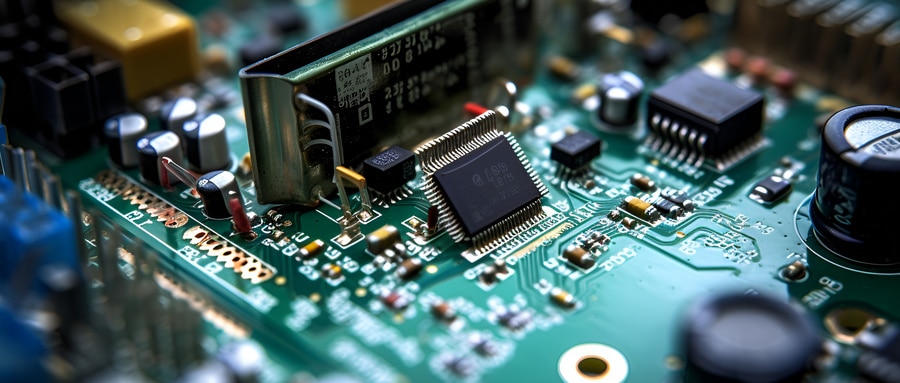Heavy Copper PCBs: Powering Up the Future of High-Current Electronics
PCBs (Printed Circuit Boards) serve as the heartbeat of our electrical devices, from producing energy to transmitting data. Of all the different forms of PCBs available, Heavy Copper PCBs stand out. Incorporating more robust capabilities of standard boards while remaining cost effective solutions, making them invaluable assets in high current applications.
Heavy Copper PCBs live up to their name by employing thick copper layers – typically over three ounces per square foot – which exceed standard PCB copper thickness by far and provide many practical advantages, leading to more reliable, energy-efficient, and resilient electronic systems.
Why opt for a Heavy Copper PCB? Here we explore their unique characteristics and benefits.
1. Increased Endurance:
Heavy Copper PCBs excel when it comes to withstanding high currents, high temperatures, and repeated thermal cycling. They effectively dissipate heat while mitigating risks associated with overheating or damage – ideal for devices which must operate continuously under demanding conditions.
2. Higher Current Loads:
PCBs designed with thicker copper layers have the capability of handling higher current loads while still remaining within acceptable temperatures, making these boards perfect for power supplies, automotive systems and military equipment.
3. Compact Designs:
Heavy Copper PCBs can support more power on one layer, eliminating the need for multiple layered designs and leading to smaller and lighter devices – an invaluable benefit in industries such as aerospace and transportation.
Given their many unique advantages, Heavy Copper PCBs have found their place in many high-powered applications:
- Power Supplies and Converters: Heavy copper PCB boards offer considerable protection from high voltage and current stresses, providing stability in these products.
- Automotive PCBs deliver improved performance and durability in electric vehicles, hybrid systems and advanced driver assistance systems (ADAS).
- Medical Devices: Lifesaving medical devices such as defibrillators and surgical lights require high reliability under heavy power draw; such equipment relies heavily on PCBs designed for medical equipment to remain reliable under these circumstances.
- Aerospace and Military: Heavy Copper PCBs offer unsurpassed robustness, reliability, and high power capacity in radar systems, power distribution panels, and weapon control systems.
As technology evolves, demand for devices capable of managing higher powers in more compact packages continues to rise. Heavy copper PCBs provide an effective solution for these high power electronic design challenges.

Heavy Copper PCBs play an indispensable role in today’s power-hungry world of electronics. From offering resilience and improved thermal characteristics, to compact yet efficient designs and offering compact yet efficient layouts, Heavy Copper PCBs remain invaluable workhorses of electronic design that exemplify how the saying “Copper is King,” even in PCB design!
FAQ:
- What is a Heavy Copper Printed Circuit Board?
A Heavy Copper Printed Circuit Board is a type of printed circuit board (PCB) that uses thicker copper for its circuit patterns compared to regular PCBs. Typically, heavy copper is defined as copper thickness greater than 3 ounces (oz) or about 0.0042 inches. - What are the benefits of a Heavy Copper Printed Circuit Board?
Heavy copper Printed Circuit Boards withstand higher current levels and are proven to be more durable. They also have a higher tolerance of thermal stress, can provide better connection reliability and are advantageous for electromechanical systems where mechanical strength is required. - What are typical applications for Heavy Copper Printed Circuit Board?
These types of PCBs are often used in power electronics and power supply systems, automotive industry, military and aerospace applications, solar panel systems, and other electronics where high-power or high-reliability is required. - What are the manufacturing challenges of Heavy Copper Printed Circuit Boards?
During the manufacturing of heavy copper Printed Circuit Boards, controlling etching techniques becomes challenging due to copper depth variances. Also, plating the side walls of heavy copper can be very complex. - Can Heavy Copper be added to multilayer PCBs?
Yes, heavy copper can indeed be incorporated into multilayer PCB designs. It’s used to increase the overall conductivity and thermal management capabilities of the board. - Are Heavy Copper PCBs more expensive?
The added cost is dependent on the specific requirements of the design and the manufacturing process. However, generally, due to their increased complexity and the higher amount of copper, they tend to be more expensive than standard PCBs. - How is the thickness of the copper measured in Heavy Copper PCBs?
The thickness in heavy copper PCBs is usually measured in ounces per square foot. The commonly used ratings are 3oz., 4oz., 6oz. but can go up to 20oz. and higher in very specialized cases. - How much current can Heavy Copper PCBs carry?
The amount of current a heavy copper PCB can carry depends on the thickness of the copper used. The more copper, the higher the current capacity. A common rule of thumb is 1oz. of copper can carry about 1 ampere of current. - How does the use of Heavy Copper affect the thermal attributes of a PCB?
Heavy copper PCBs generally have better thermal attributes. The ability of copper to dissipate heat will help to keep your PCB cooler, protect key components, and increase the reliability and lifespan of your board. - Can inventoried copper clad be used for Heavy Copper boards?
Generally, custom copper clad has to be ordered for heavy copper PCBs. Standard inventory copper clad does not provide the thickness typically required in a heavy copper application.























